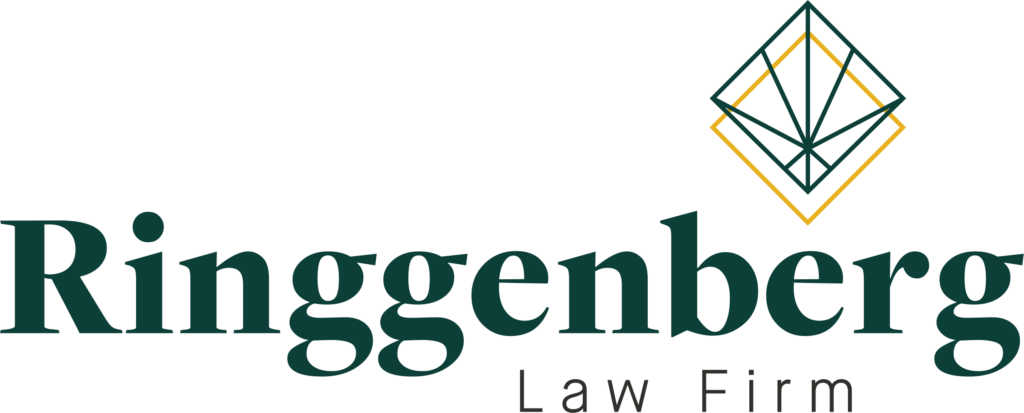by Hannah Strassburger.
Under the Families First Coronavirus Response Act (FFCRA), employers with fewer than 500 employees must provide paid leave to employees who are unable to work or telework due to COVID-19 and related health concerns. If you are an employer with 500 or fewer employees, it is your responsibility to provide notice to your employees of these benefits and to provide qualified employees with the required paid leave and related protections.
To provide notice to your employees, download and notice below and post it in a conspicuous place at your premises by April 1, 2020. Alternatively, you can email or direct mail the notice to your employees, or post it on an employee information internal or external website.
EMPLOYEE RIGHTS POSTER (ENGLISH)
EMPLOYEE RIGHTS POSTER (SPANISH)
The FFCRA includes the Emergency Paid Sick Leave Act (EPSLA), which provides up to two weeks of paid sick leave to qualifying employees, and the Emergency Family and Medical Leave Expansion Act (EFMLA), which provides up to 12 weeks of job-protected leave and 10 weeks of paid leave to qualifying employees. The FFCRA also provides tax credits designed to fully reimburse employers for the cost of paid leave provided under the EPSLA and EFMLA. The Act goes into effect April 1, 2020 and will remain in effect through December 31, 2020.
Below is Ringgenberg Law Firm attorney Hannah Strassburger’s detailed explanation of the paid leave requirements, the tax credits available to employers, and the documentation you should request from employees who request leave under the Act. There will be more details, guidance, and legislation coming, and we will endeavor to update you as we learn more.
Emergency Paid Sick Leave Act
| Who is Covered The EPSLA requires an employer with fewer than 500 employees to provide any employee with two weeks of paid sick leave if the employee is unable to work (or telework) because the employee is:Subject to a Federal, State, or local quarantine or isolation order related to COVID–19.Advised by a health care provider to self-quarantine due to concerns related to COVID-19.Experiencing symptoms of COVID–19 and seeking a medical diagnosis.The employee is caring for an individual who is subject to a quarantine or isolation order or has been advised to self-quarantine due to concerns related to COVID-19.The employee is caring for a son or daughter if the school or place of care of the son or daughter has been closed, or the child care provider of such son or daughter is unavailable, due to COVID–19 precautions.Experiencing any other substantially similar condition specified by the Secretary of Health and Human ServicesThere are no exemptions for small businesses. |
| Paid Sick Time A full time employee is entitled to 80 hours paid sick time, and a part time employee is entitled to the average hours the employee works over a two week period, subject to a cap. The cap on paid sick time depends on which reason the employee requires sick leave: For (1)-(3), where the employee is subject to isolation and/or seeking diagnosis, paid sick time is capped at $511 per day and $5,110 total. For (4)-(6), where an employee is caring for their child or another individual who is subject to isolation, paid sick time is capped at $200 per day and $2,000 total.These qualifying conditions are very broad. They cover employees who seek a medical diagnosis, employees caring for children who’s schools or daycares have been closed, and employees who are caring for individuals (including non-family members) being ordered to isolate. In California, where most schools have closed and individuals over the age of 65 or with certain health conditions are being told to self-isolate, many employees are likely to qualify under one of these conditions. |
| Prohibitions An employer cannot do any of the following: (1) require the employee to find a replacement (2) require the employee or use other paid leave beforehand, (3) discharge, discipline or discriminate against an employee who takes leave under the Act and who initiates proceedings under the Act. Doing so risks significant liability. |
Emergency Family Medical Leave Expansion Act
| Who is Covered The EFMLA applies to private businesses with fewer than 500 employees and covers employees who have worked for their employer for 30 days or more. An employee qualifies for coverage under the EFMLA if the employee is unable to work (or telework) because the employee needs to care for their underage child if the child’s school has been closed or their child care provider is unavailable, due to a public health emergency. |
| Exemption for Small Businesses The Act gives the Secretary of Labor the authority “to exempt small businesses with fewer than 50 employees from the leave requirements when the imposition of such requirements would jeopardize the viability of the business as a going concern.” We can expect more guidance on this exemption in April. |
| Paid Leave/Benefits The EFMLA provides up to 12 weeks of job-protected leave to a qualifying employee. Following 10 days of unpaid leave, an employee is entitled to two-thirds the employee’s regular pay rate for up to ten more weeks, subject to a cap of $200 a day and 10,000 total. Subject to the exemption for employers with fewer than 25 employees (described below), the employee is also entitled to traditional FMLA job protection and restoration.An employee can use other time, such as vacation or paid sick leave, to cover the initial 10 days of unpaid leave time. Note, an employee who qualifies for emergency paid sick leave under the EPSLA because they have a child whose school/daycare is closed, could use those paid sick leave benefits during the 10 day unpaid period of the EFMLA. |
| Job Restoration Exemption for Small Businesses The Act exempts employers with fewer than 25 employees from the traditional FMLA job restoration requirements if the employee’s position no longer exists due to economic conditions or changes in operating conditions caused by a public health emergency, so long as the employer (1) makes reasonable attempts to return the employee to an equivalent position and (2) makes efforts to return the employee to work for up to a year following the employee’s leave. |
Tax Credits for Paid Sick and Family Medical Leave
| Tax Credit Coverage The FFCRA entitles employers to be fully reimbursed by the federal government on a quarterly basis for the leave paid to employees under the EFMLA and EPSLA. Tax credits (amounting to 100% of the qualified sick leave wages and qualified family leave wages) are applied against employer-paid social security taxes (excise taxes under 26 U.S.C.A. §3111(a) or 3221(a)). Any excess wages are refunded as overpayments of those employment taxes (in accordance with 26 U.S.C.A. § 6402(a) and 6413(b)). Note, these credits are not available to employers already receiving tax credit for paid family and medical leave under Section 45S of the tax code. |
| Tax Credit Eligibility for Cannabis Operators Section 280E of the tax code prohibits cannabis businesses from taking any “deduction or credit… for any amount paid or incurred during the taxable year in carrying on any [cannabis] trade or business” in calculating its taxable income. 26 U.S.C.A. § 280E; 26 U.S.C.A. § 261 (In computing taxable income no deduction shall in any case be allowed in respect of the items specified in this part.). Because 280E’s prohibition applies to computing a businesses taxable income, we believe it does not prevent a cannabis business from being eligible for the tax credits for paid sick and paid family and medical leave, as the credits are applied against social security taxes paid by the employer, and are separate from the business’s income taxes. |
Documentation
The U.S. Dep’t of Labor recently provided guidance (linked here) on the documents employers must request from employees requesting leave under the FFCRA. This includes (1) the employee’s name, (2) the qualifying reason for requesting leave, (3) the statement that the employee is unable to work, including telework, for that reason, and (4) the date(s) for which leave is requested, and (5) documentation of the reason for leave.
Documentation includes:
- When an employee requests leave because the employee has been advised to self-quarantine, you must request the name of the health care provider who has advised the employee to self-quarantine. You may also request written documentation by a health care provider advising the employee to self-quarantine due to concerns related to COVID-19.
- When an employee requests leave to care for a child who’s school or daycare is closed, you must request documentation of the closure. For example, you can request a notice that has been posted on a government, school, or day care website, or published in a newspaper, or an email from an employee or official of the school, place of care, or child care provider.
- When an employee requests leave because of a quarantine or isolation order, you must request the source of the isolation order. For example, you can request a copy of the Federal, State or local quarantine or isolation order related to COVID-19 applicable to the employee.
- The U.S. Dep’t of Labor’s guidance does not address this specifically yet, but when an employee requests leave to care for an individual who is subject to an isolation order or has been advised to self quarantine, you should similarly request either the source of the applicable isolation order to the individual or the name of the health care provider advising the individual to self-quarantine. You may also request written documentation from the healthcare provider that the employee is needed to care for the individual. We will hopefully get more specific forms/guidance on this one soon.
Be sure to hold on to all of these documents in order to claim the applicable tax credits.

